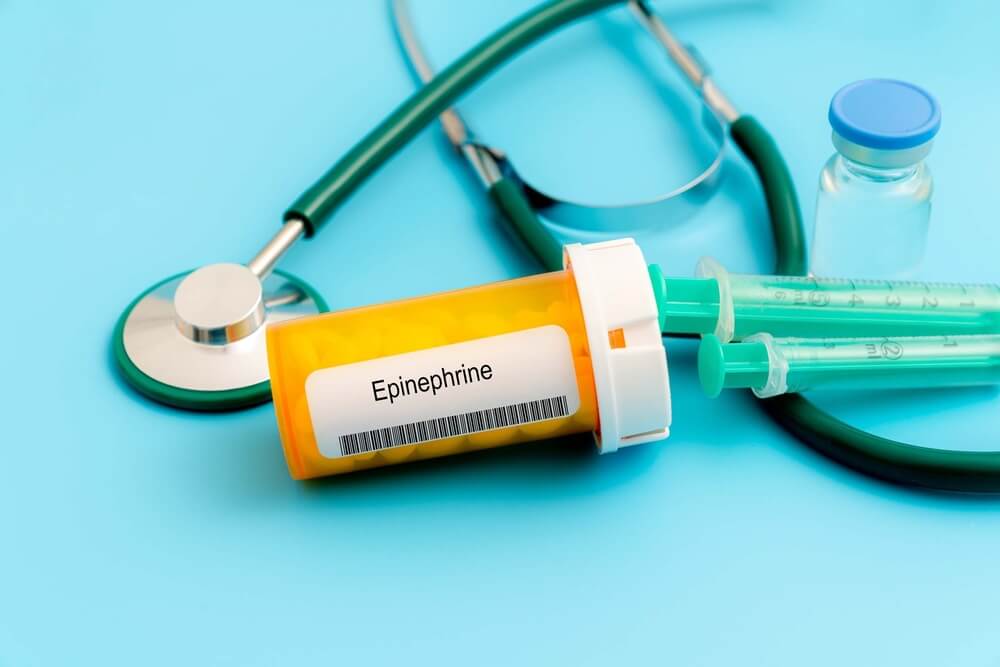Anaphylaxis is a severe allergic reaction that can be potentially life-threatening if patients don’t get adequate treatment immediately. For the most part, the reaction is triggered by food allergies due to patients being intolerant to specific foods.
The experts at the Allergy and Immunology Center know that even the thought of such severe allergic reactions can make people with allergies feel extremely uncomfortable. As such, they might have done their own research on the subject; more specifically, they’ve already read about the effects of epinephrine for allergic reactions, and now they wonder, how exactly does epinephrine treat anaphylaxis? In this article, our experts aim to give you all the answers.
About Allergic Reactions
Allergic reactions occur when your immune system goes into overdrive, releasing chemicals like histamine. These chemicals can lead to bothersome symptoms such as itchy, watery eyes and a runny nose. Typically, these symptoms are confined to a specific area of the body.
However, in some individuals, allergic reactions can take a much more severe form, resulting in a condition known as anaphylaxis. Anaphylactic reactions are characterized by more widespread symptoms, including swelling, wheezing, shortness of breath, and difficulty swallowing. Unlike localized reactions, anaphylaxis affects multiple areas of the body simultaneously and requires immediate medical attention due to its potentially life-threatening nature.
In some cases, patients with an anaphylactic reaction may enter a state called anaphylactic shock. This state causes a severe blood pressure drop while the bronchial tissues swell, which makes breathing more difficult. The reaction will also trigger wheezing, and patients may lose consciousness. Anaphylactic shock must be immediately addressed to save the patient’s life.
Unfortunately, anaphylaxis can be classified as a common problem in the United States, as the available data indicates that the allergic reaction typically occurs in around one in fifty people. Still, some experts believe this rate may even be higher, more specifically, to around one in 20 people.

Causes and symptoms of Anaphylaxis
For the most part, food allergies are the main culprits behind this severe allergic reaction. The foods that may trigger severe allergic reactions are the following:
- Soy
- Peanuts
- Cow’s milk
- Eggs
- Wheat
- Tree nuts such as Brazil nuts, walnuts, cashews, hazelnuts
In other cases, other substances may also trigger an anaphylactic reaction. These may be the following:
- Venom allergies (allergic reactions to wasp or bee stings)
- Latex found in adhesive tape and disposable gloves, to name a few.
- Specific substances and medications like NSAIDs (nonsteroidal anti-inflammatory drugs) and the dye usually used during CT scans.
When talking about the symptoms of the allergic reaction, the condition typically starts with itchiness in the face or eyes. After that, within a few minutes, patients may start to experience more severe signs, such as:
- Hives
- Shortness of breath
- Difficulty swallowing
- Red rashes
- Breathing difficulties, swelling
- Pain in the abdominal area
- Cramps
- Chest tightness
- Diarrhea
- Feeling of dread or doom
- Wheezing
- Vomiting
If you detect any symptoms, it’s crucial to seek immediate medical assistance or use your prescribed allergy medication. Failing to do so can lead to the development of more severe, life-threatening anaphylactic symptoms. Early intervention is essential for effectively managing and mitigating the risks associated with anaphylaxis.
That said, reach out or have somebody call your provider if you are experiencing the following symptoms:
- Weak pulse,
- Drop in blood pressure
- Sudden weakness
- Increased heart rate
- Unconsciousness
Epinephrine for Severe Allergic Reactions
Typically, the first line of defense when it comes to combating the life-threatening effects of anaphylaxis is epinephrine.
Epinephrine is a substance that occurs in the body naturally. On that note, it’s more commonly known as the substance adrenaline. In essence, adrenaline is a typical “fight or flight” hormone that comes from the adrenal glands and is produced as a natural response to stress. Adrenaline plays an important role in the relaxation and contraction of the muscles and is also essential for feelings of awareness, fear, and energy.
How Does Epinephrine Treat Anaphylaxis
Epinephrine exerts its effects through binding to various receptors on cells throughout the body, resulting in multiple functions. In the case of severe allergic reactions accompanied by low blood pressure, epinephrine plays a crucial role in boosting blood flow by constricting blood vessels.
Epinephrine also interacts with receptors on the smooth muscles of the lungs, facilitating the relaxation of these muscles, which, in turn, opens up constricted airways and restores normal breathing. Equally significant, epinephrine binds to specific receptors on immune cells, contributing to the suppression of further release of chemicals, such as histamine, which is responsible for triggering allergic reactions. This multifaceted action of epinephrine is instrumental in addressing the various components of a severe allergic response.
Automatic Injection Devices
Several different brands offer automatic epinephrine injection devices, such as Auvi-Q and EpiPen. It’s essential to consult your doctor or pharmacist for thorough guidance on using an automatic injection device, and this instruction should also extend to any caregivers who may need to administer the medication. Additionally, before utilizing epinephrine, it’s crucial to carefully review the provided patient information, as it contains comprehensive, step-by-step instructions for administering the injection. Ensuring that you and your caregivers are well-informed on the proper usage of epinephrine is vital for managing severe allergic reactions effectively and safely.
Administering Epinephrine
For the most part, the substance should be injected into the outer thigh’s middle part. In cases of emergency, the medication may also be injected through the clothing, if needed. On that note, ensure not to administer epinephrine to any other body parts, such as:
- The feet
- The arms
- The fingers
- The buttocks
- The hands
If the initial shot fails to improve the patient’s anaphylaxis symptoms, a second shot may need to be administered 10 minutes later.
Possible Epinephrine Side Effects
Using the substance may have several expected side effects, including:
- Sweating
- Weakness
- Paleness
- Dizziness
- Pounding heartbeat
- Shakiness
- Headaches
- Feelings of anxiety and nervousness.

Important Things to Consider
Due to the potentially life-threatening nature of anaphylaxis, it is of utmost importance that individuals with severe allergies carry their epinephrine injection device with them at all times or have it readily accessible. When anaphylaxis symptoms are suspected, the administration of epinephrine should be immediate.
Experts unanimously recommend epinephrine as the primary and initial treatment for anaphylaxis, even if a patient’s reaction does not fully meet all the established criteria for anaphylaxis.
It’s important to note that after using an epinephrine dose, there may be residual solution left in the injection device. This is a normal occurrence and does not imply that you did not receive the full dose. It’s advisable to bring the used device with you to the emergency room or consult your doctor or pharmacist regarding the proper and safe disposal of used injection devices.
While epinephrine is an essential tool in managing severe allergic reactions, it is not a substitute for professional medical treatment. Following an epinephrine injection, it is imperative to call for an ambulance or immediately proceed to the hospital to receive comprehensive medical care.
On that note, feel free to contact us if you have any concerns or questions.


